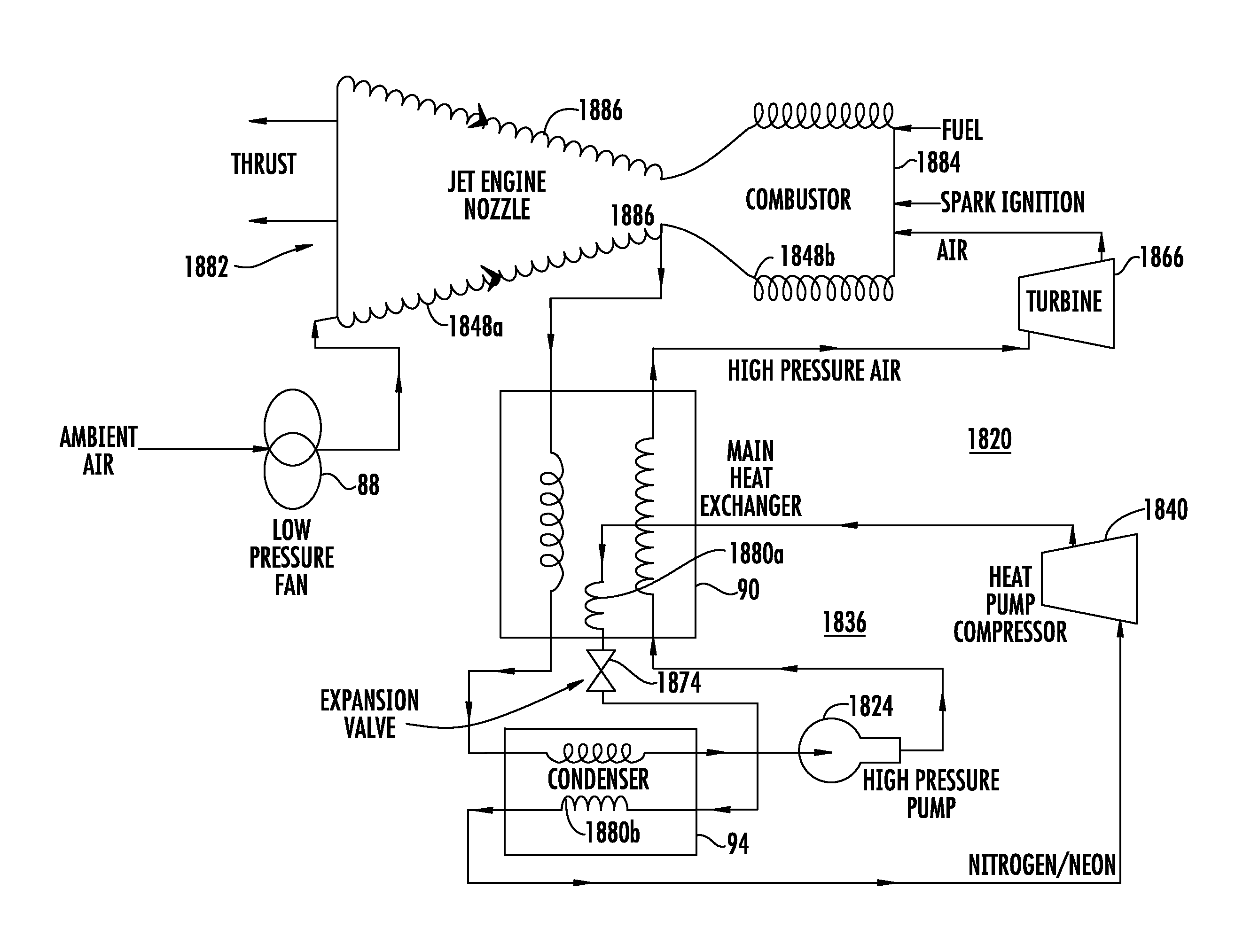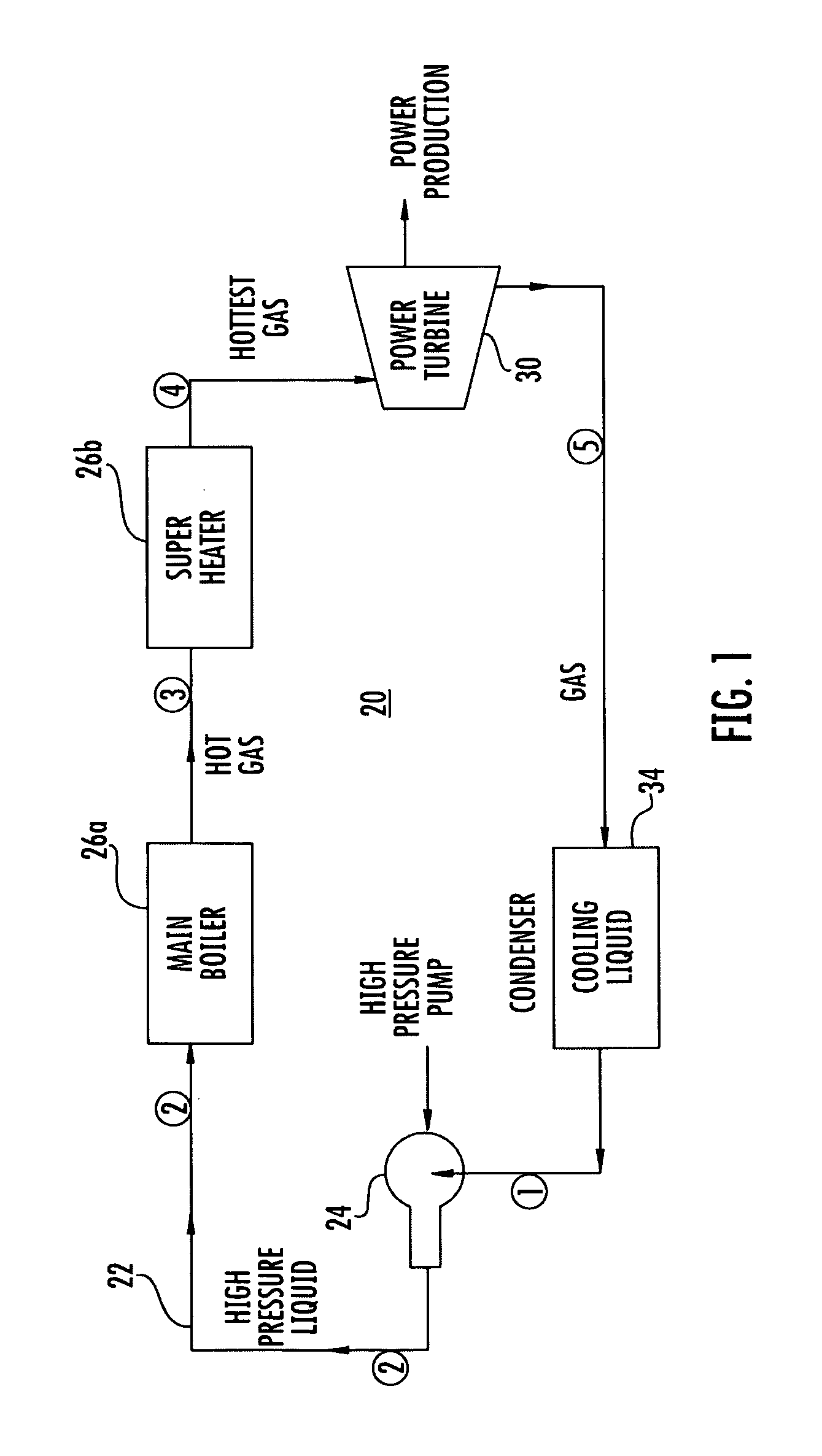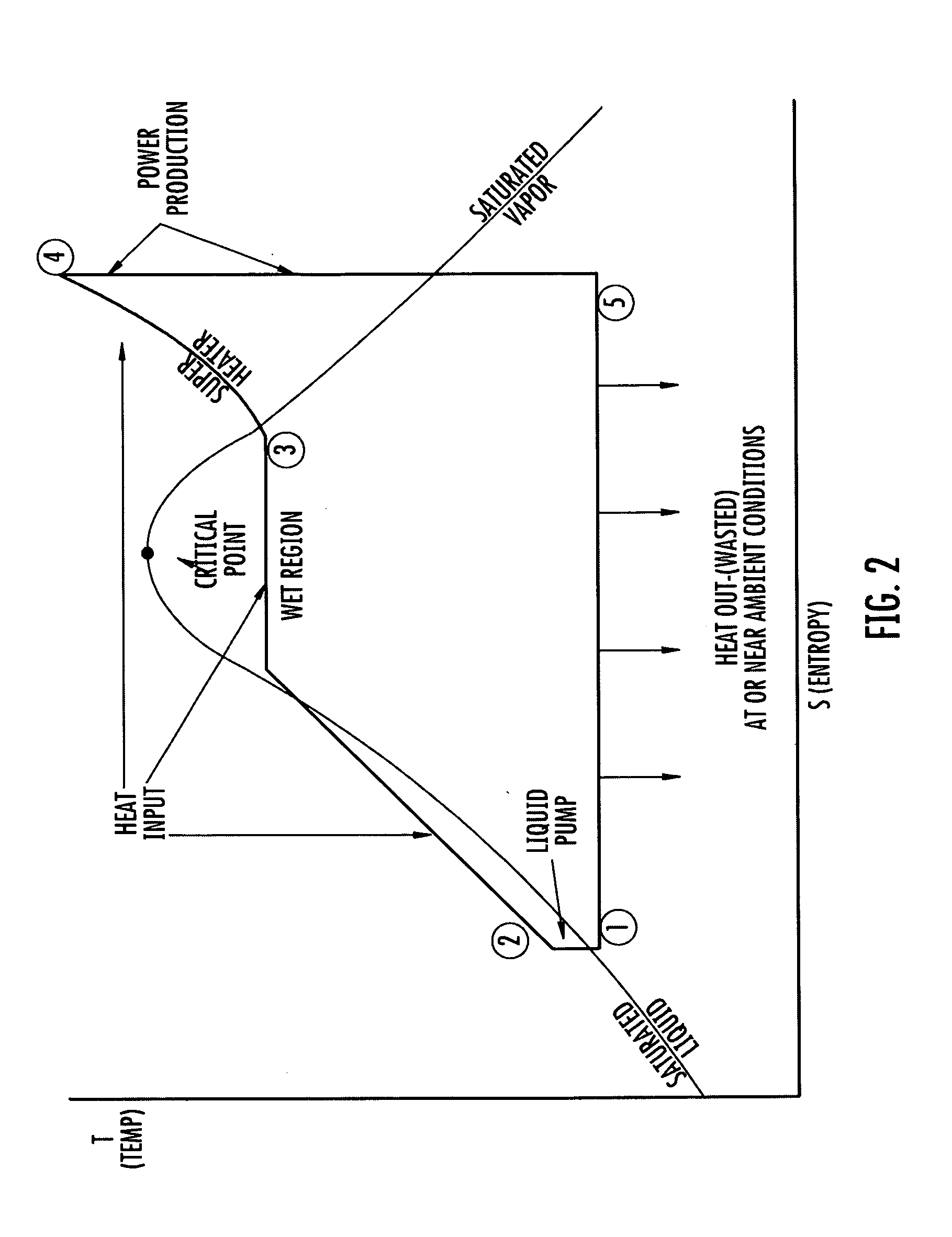Ultra-high-efficiency engines and corresponding thermodynamic system
a thermodynamic system and ultra-high-efficiency technology, applied in the direction of machines/engines, efficient propulsion technologies, mechanical apparatuses, etc., can solve the problems of approximately two-thirds of the input heat being wasted and the thermodynamic loop remains wide open, and achieve the effect of improving the thermodynamic efficiency of a number of engines
- Summary
- Abstract
- Description
- Claims
- Application Information
AI Technical Summary
Benefits of technology
Problems solved by technology
Method used
Image
Examples
Embodiment Construction
[0061]Referring now to the drawings and the illustrative embodiments depicted therein, the preferred embodiment utilizes a modified Carnot cycle (FIGS. 3 and 4). Compression is illustrated as kept to a minimum so as to minimize both the compression power and the temperature differential across the compression. This results in the sloping heat input part of the cycle. The vertically straight line, nearly an isentropic line, represents the work produced, such as through an expansion device. The bottom horizontal line represents the large heat rejection of the power cycle, which does not need to be discharged to an external heat reservoir or sump. At least a portion of the rejection heat is pumped over to the slanted heat input line, such as by a heat pump as illustrated in FIG. 4.
[0062]The basic cycle employs a heat pump 136 to transfer heat from one portion, such as the low temperature side of an engine, or other thermodynamic system, to another portion, such as the high temperature ...
PUM
 Login to View More
Login to View More Abstract
Description
Claims
Application Information
 Login to View More
Login to View More - R&D
- Intellectual Property
- Life Sciences
- Materials
- Tech Scout
- Unparalleled Data Quality
- Higher Quality Content
- 60% Fewer Hallucinations
Browse by: Latest US Patents, China's latest patents, Technical Efficacy Thesaurus, Application Domain, Technology Topic, Popular Technical Reports.
© 2025 PatSnap. All rights reserved.Legal|Privacy policy|Modern Slavery Act Transparency Statement|Sitemap|About US| Contact US: help@patsnap.com



